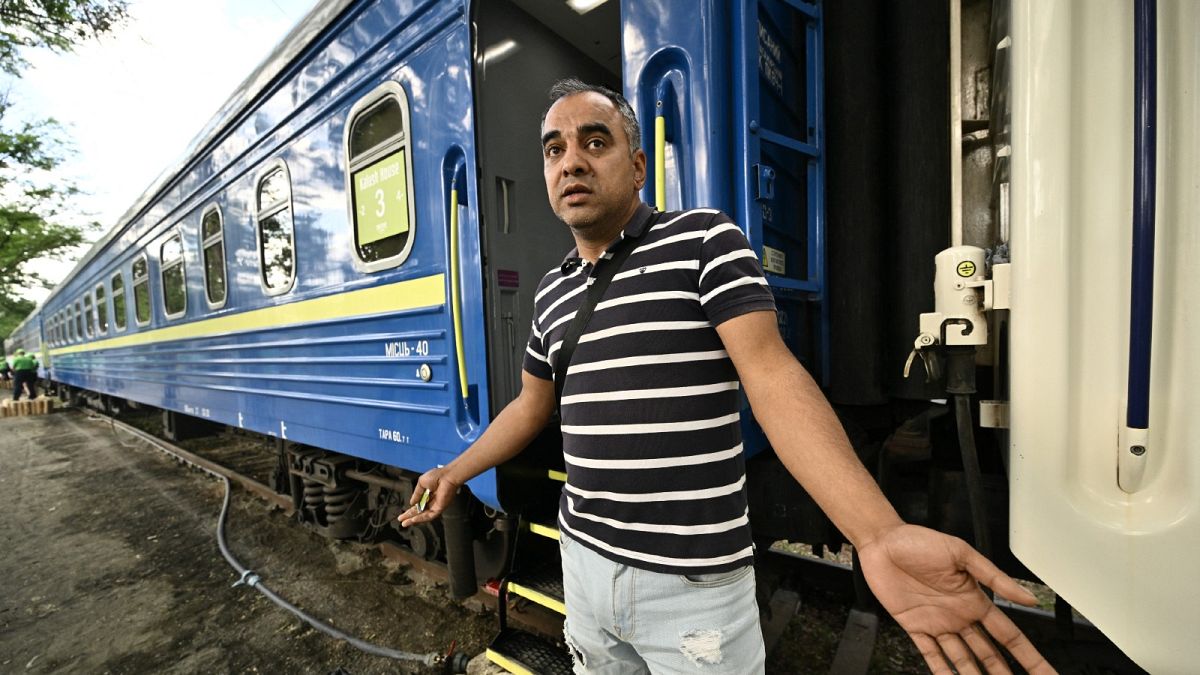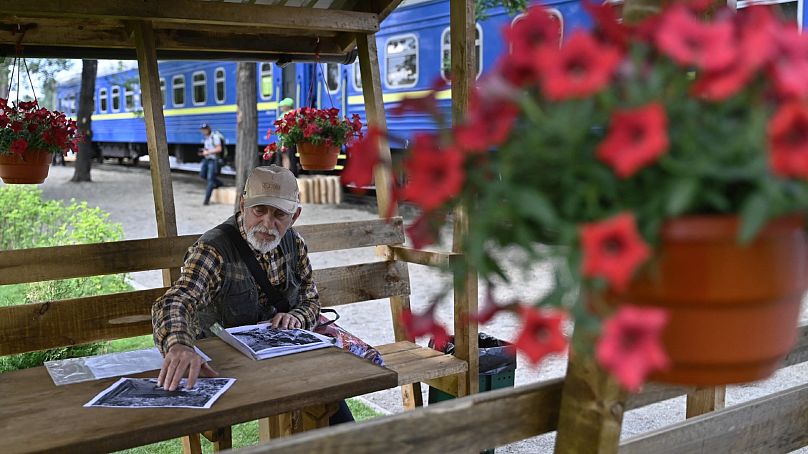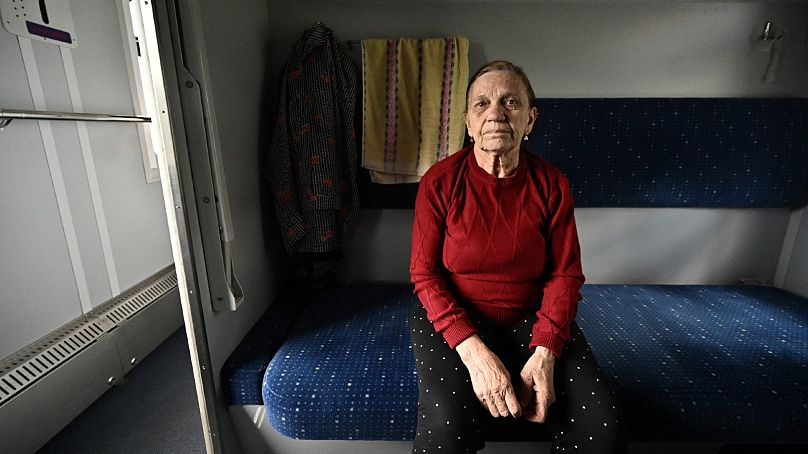Dubbed the "Iron City", the former sleeper train is composed of five wagons, which can accommodate up to 25 families
"I was told that I could stay [on the train] as long as necessary," said 73-year-old Vladimir Melnik, as he sat in front of black and white photos of his old house, which burnt to the ground in March.
"A missile pierced the roof, the ceiling and ended up in the basement, but I managed to save myself," he added.
Since the fateful day his home in Irpin -- on the outskirts of Ukraine -- was destroyed, Melnik took refuge with his sister.
But on Wednesday he was one of numerous displaced Ukrainians to be rehoused in a sleeper train provided by the Ukrainian railway company, Ukrzaliznytsia.
Dubbed the "Iron City", the former sleeper train is composed of five wagons, which can accommodate up to 25 families in total.
Each car is equipped with air-conditioning, sanitary facilities, wifi and coffee machines, while dedicated wagons for dining and showering serve their new guests' other needs.
Internet access on the railway is provided by Starlink, which was launched by the US billionaire Elon Musk. NGOs are currently giving residents their meals.
Play areas for children have also been set up on lawns outside the sleeper train, besides barbecues with wooden benches, tables and two hammocks.
"We have to have the house appraised and rebuild everything, and that will take time," said Melnik, who is retired.
Drawing a state pension of around €200 ($210) a month, Melnik wondered how he would finance the reconstruction of his home, although he was glad for the temporary reprieve.
Along with Melnik, Olga Oleïnik, 77, has also been housed in the sleeper train, after her home in Irpin was destroyed at the start of the war.
She moved into one of the wagons Wednesday with her family of six.
Melnik and Oleïnik were among the first five families to be moved into the "Iron City", although more people are expected at the end of June.
Lying on the doorstep of the Ukrainian capital, Irpin was occupied by Russian troops in March during their abortive advance towards Kyiv.
Russian shelling destroyed 71% of the buildings in Irpin, according to the city's mayor Oleksandr Markushin, and there have been accusations that war crimes were committed against civilians by its soldiers.
Russia denies these allegations.
Since the war between Russia and Ukraine broke out on 24 February, 12.8 million people are estimated to have been displaced in Ukraine.
Of these, 7.7 million are internally displaced - equivalent to 17.5% of Ukraine's entire population, according to the United Nations.


